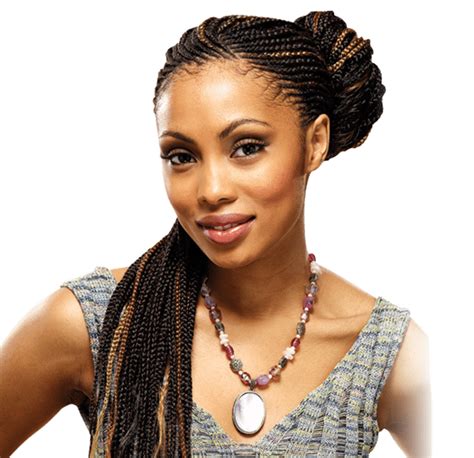Introduction
Human hair braids, an ancient and versatile art form, have captivated cultures across the globe for centuries. From intricate cornrows and box braids to flowing extensions and decorative buns, hair braids adorn heads with an array of styles and meanings.

Cultural Significance
Braiding hair holds deep cultural significance in various communities. In African cultures, braids symbolize identity, status, and spirituality. In Native American tribes, braids represent strength, wisdom, and connection to nature. Across Asia, braids convey marital status, social class, and religious beliefs.
Global Market Insights
The global hair extension market, including human hair braids, is projected to reach $11.6 billion by 2027, growing at a CAGR of 6.8% from 2021 to 2027 (Research and Markets, 2021). This growth is attributed to rising demand for natural-looking hair extensions, increased spending on beauty treatments, and growing popularity of social media influencers who showcase hair braids.
Types of Human Hair Braids
Human hair braids come in a wide variety of styles, including:
African-Inspired Braids: Cornrows, box braids, dreadlocks, Senegalese twists
Protective Braids: Braids that prevent hair damage and promote hair growth, such as Dutch braids, French braids
Fashion Braids: Braids designed for aesthetics, such as fishtail braids, waterfall braids, and halo braids
Extensions: Braids made from human hair that are attached to existing hair to add length, volume, or color
Benefits of Human Hair Braids
Human hair braids offer a range of benefits, including:
- Versatility: Braids can be styled in endless ways to suit different occasions and preferences.
- Protective: Braids can protect hair from damage caused by heat, styling products, and environmental factors.
- Time-Saving: Braids can save time on styling and maintenance, as they can last for weeks or even months.
- Aesthetic Appeal: Braids can enhance one’s appearance and boost confidence.
- Cultural Expression: Braids allow individuals to express their cultural heritage or personal style.
Motivations for Human Hair Braids
People choose to wear human hair braids for a variety of reasons, including:
- Fashion: To enhance their appearance and make a bold statement.
- Cultural Identity: To connect with their cultural roots.
- Protective Styling: To protect their hair from damage.
- Hair Growth: To promote hair growth and reduce breakage.
- Experimentation: To explore different hairstyles and express creativity.
Common Mistakes to Avoid
When getting human hair braids, it’s important to avoid common mistakes such as:
- Choosing braiders without proper experience or qualifications.
- Braiding hair that is too loose or too tight.
- Using products that contain harsh chemicals.
- Ignoring scalp care.
- Washing braids too often.
Effective Strategies for Healthy Braids
To ensure healthy braids, follow these strategies:
- Choose an experienced braider.
- Prepare hair with a deep conditioning treatment before braiding.
- Detangle hair thoroughly before braiding.
- Use a gentle shampoo and conditioner for washing.
- Apply leave-in conditioner or hair oil to keep hair moisturized.
- Wear a satin bonnet at night to protect braids from friction.
Innovative Applications
The concept of hair braiding has inspired creative new applications beyond traditional styles:
Biotextiles: Braided hair fibers can be used to create strong and flexible biotextiles for applications such as wearable devices and medical implants.
Hair Jewelry: Intricate braids can be incorporated into hair accessories such as hairpins, headbands, and earrings.
Architecture: Braided structures can be used as architectural elements, offering both aesthetic appeal and structural integrity.
Art Installations: Hair braids have been used as the medium for large-scale art installations, exploring themes of identity, culture, and diversity.
Tables
Table 1: Global Hair Extension Market by Region
| Region | Market Size (2020) | Growth Rate (2021-2027) |
|---|---|---|
| North America | $3.2 billion | 6.6% |
| Europe | $2.8 billion | 6.4% |
| Asia-Pacific | $2.5 billion | 7.2% |
| South America | $1.2 billion | 6.0% |
| Middle East and Africa | $0.9 billion | 5.8% |
Table 2: Types of Human Hair Braids and Their Benefits
| Type of Braid | Benefits |
|---|---|
| Cornrows | Protective, versatile, easy to maintain |
| Box Braids | Protective, long-lasting, customizable |
| Dreadlocks | Protective, low-maintenance, permanent |
| Senegalese Twists | Protective, volumizing, stylish |
| Dutch Braids | Protective, voluminous, elegant |
| French Braids | Protective, timeless, versatile |
| Fishtail Braids | Decorative, romantic, Bohemian |
| Waterfall Braids | Decorative, flowing, elegant |
| Halo Braids | Protective, voluminous, high-fashion |
Table 3: Pain Points and Motivations for Human Hair Braids
| Pain Point | Motivation |
|---|---|
| Hair damage | Protective styling |
| Time constraints | Convenience |
| Desire for a different look | Fashion |
| Cultural expression | Identity |
| Hair growth concerns | Hair health |
Table 4: Effective Strategies for Healthy Braids
| Strategy | Purpose |
|---|---|
| Choose an experienced braider | Ensures proper braiding techniques |
| Prepare hair with a deep conditioning treatment | Strengthens hair and reduces breakage |
| Detangle hair thoroughly | Prevents tangles and avoids stress on scalp |
| Use a gentle shampoo and conditioner | Maintains hair moisture and prevents dryness |
| Apply leave-in conditioner or hair oil | Moisturizes hair and protects from environmental damage |
| Wear a satin bonnet at night | Reduces friction and prevents breakage |
Conclusion
Human hair braids are a multifaceted cultural expression that transcends geographical and cultural boundaries. With their versatility, protective qualities, aesthetic appeal, and cultural significance, braids continue to captivate people worldwide. As the global hair extension market continues to grow, innovative applications of hair braiding techniques are emerging, further showcasing the boundless potential of this ancient art form.
